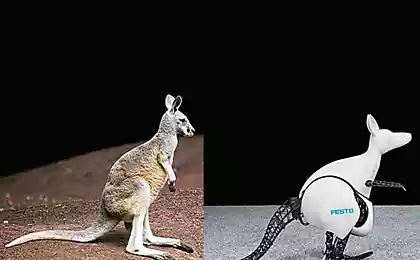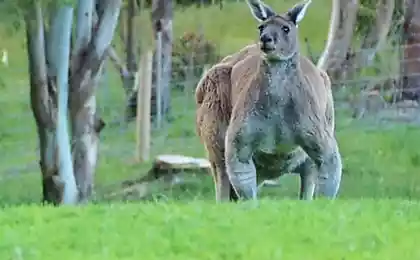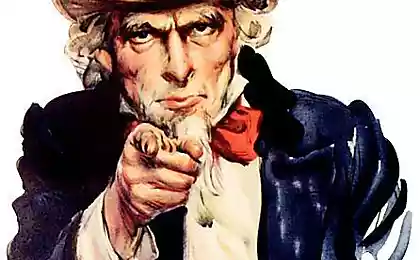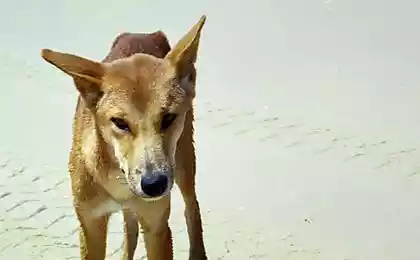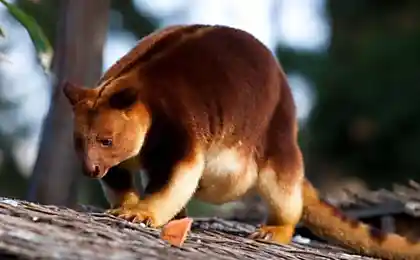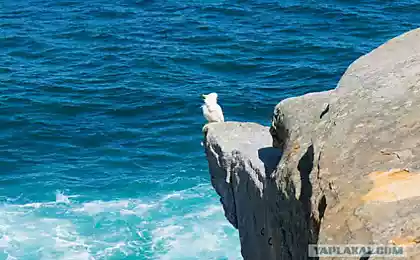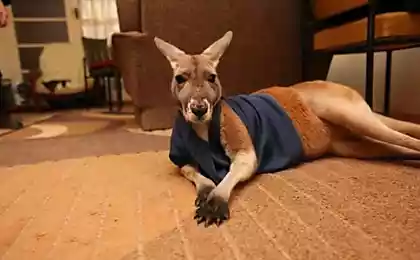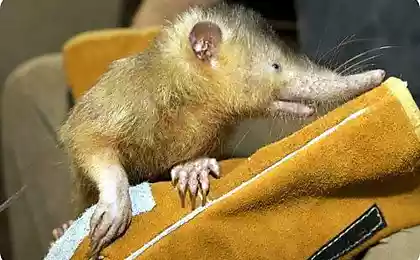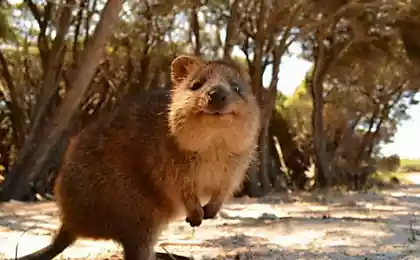1208
Kangaroo

The legend of the origin of the name is known to many kangaroos, but still recall. When European explorers arrived on the Australian mainland, the first time you saw this strange animal for them, they asked the indigenous inhabitants of the Australian Aborigines, as they call it being. They replied: ken-gu-ru. Europeans thought that this is the name of the animal, although in fact this phrase in the language of Aboriginal means "I do not understand».
In nature, there are at least 69 species of kangaroo (most of them are less commonly referred to by another name - wallabies). Weight kangaroo individuals of different species varies from 90 g to 500 kg. The largest species of kangaroos - Red kangaroo. At a height above it can be human, but it can weigh 90 pounds. This is the largest marsupial in the world.
Male, female and baby kangaroo in English have their own names. Male kangaroo is called boomer, female - flyer, and a baby - joey.
Kangaroo jumping with powerful hindquarters. While running through the animal's body balancing tail. Kangaroos can run at speeds up to 60 kilometers per hour and can jump the barrier height of 3 meters (!). Day of kangaroos usually resting in the shade, usually eat the same afternoon or at night, when it is cool. They eat mostly grass. Water they need very little. Kangaroos can go without water for months.
Females give birth every year kangaroo. The gestation period - 33 days. Joey kangaroo is born very tiny (about the size of a peanut) and bears in the bag. At birth, the baby still does not have fur, his organs are underdeveloped, and his eyes are closed. The baby lives in a bag for quite a long time (six months), as long as he does not appear own fur, giving the opportunity to regulate body temperature. Even when the baby is pretty big, it continues to feed on milk from the nipple mother, who is in the bag. Kangaroo pouch inside is smooth, but in front of the bag fur is thick and fluffy, to protect the baby from any bad weather. Mama Kangaroo is able to control his bag through the muscles around the edge of the entrance of the bag. It can even close the bag so that it is not exposed to water during swimming. Mom decides when a child can be released, and opens the bag. The bag has four teat from which feeds on small kangaroo. Each teat comprises different types of milk, the power required for the various phases of development of the infant. Mum-kangaroo can play simultaneously two completely different types of milk composition.
Do kangaroos big ears by which they determine the presence of predators or humans. To warn of the dangers of relatives, kangaroo paws hit the ground. Eyelids kangaroos have thick long eyelashes that protect the eyes from dust and flies. Kangaroos can fight, and they used sharp claws on their front paws, and strike blows back (supporting) paws.




